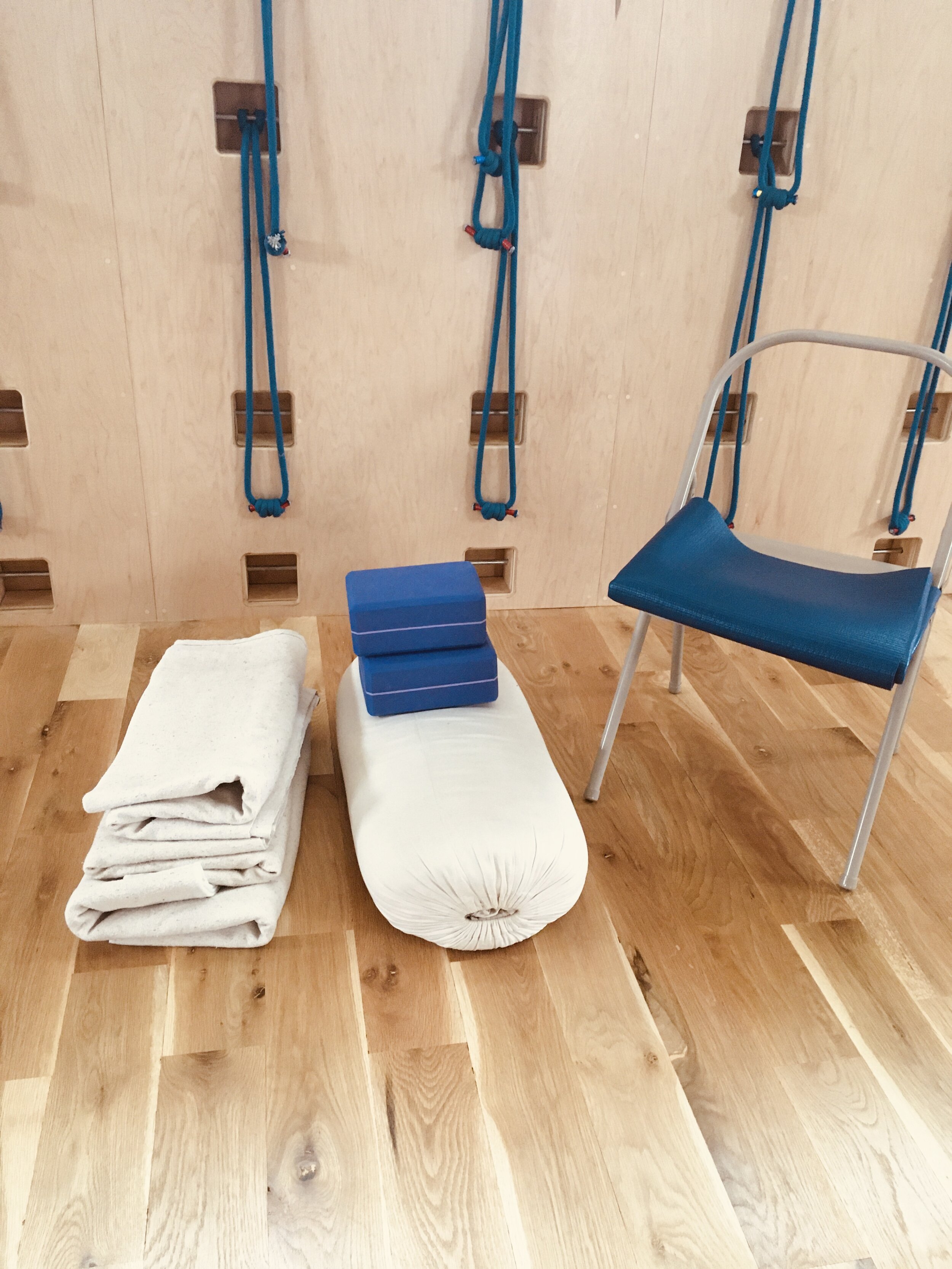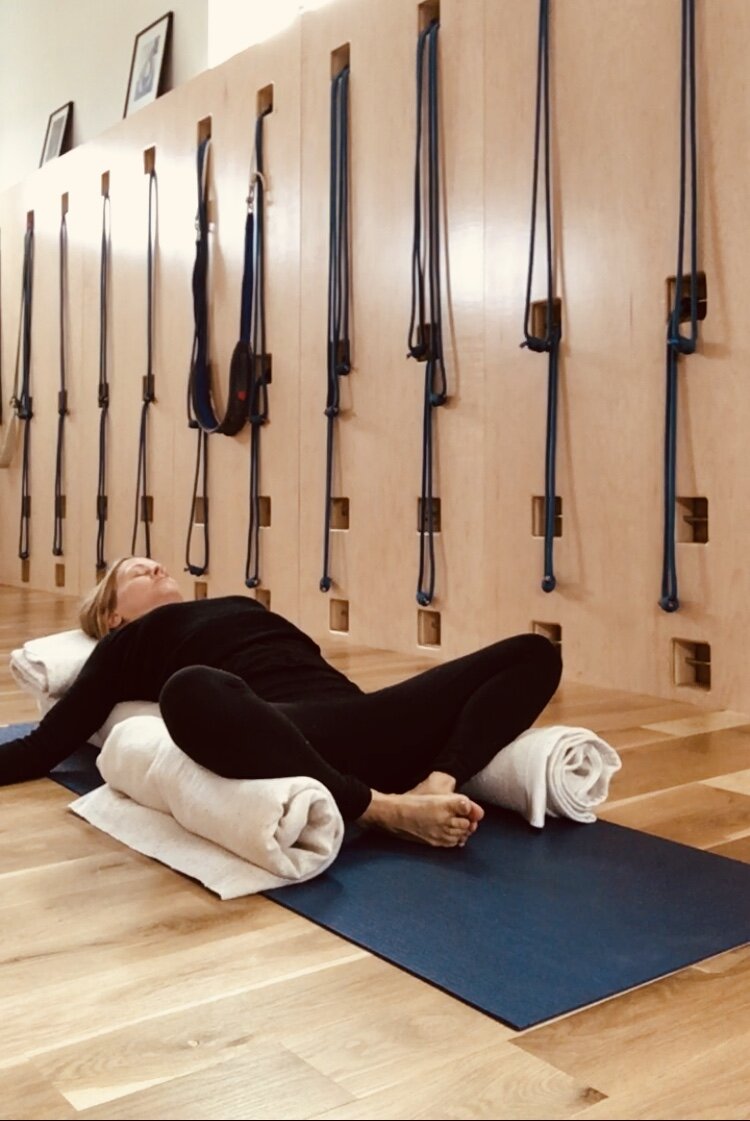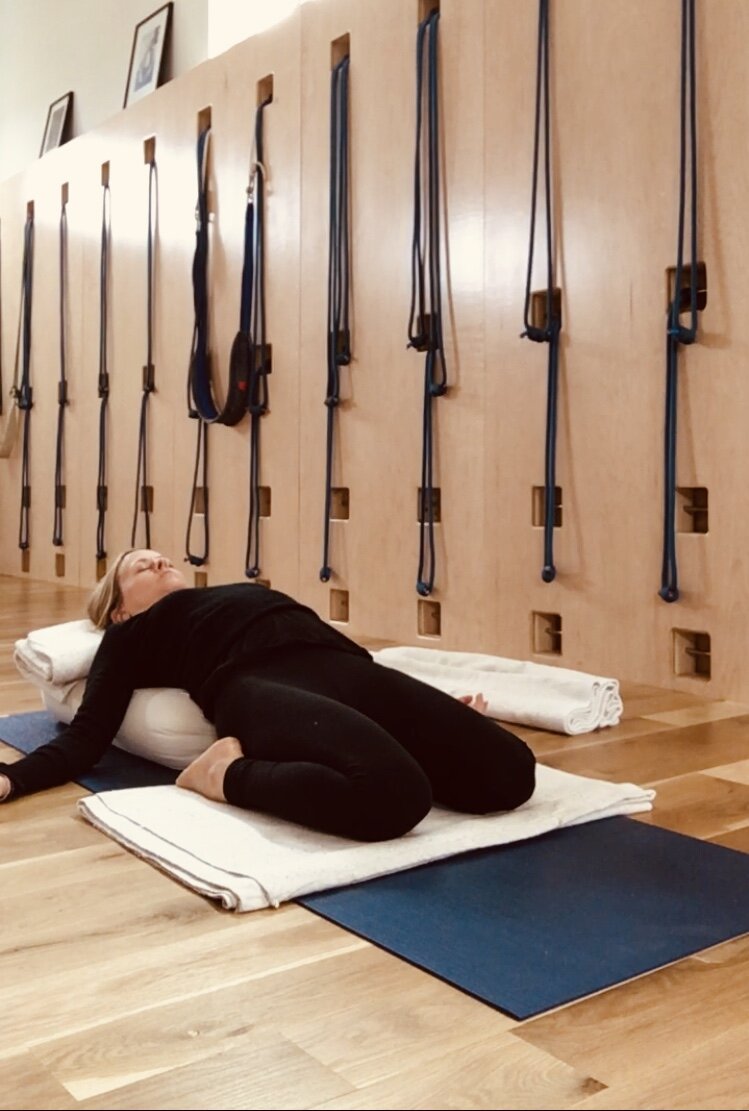A Restorative Sequence
A Supported Sequence for the Anxious Mind
Hey there, you’ll need a few props for this sequence. But it’s worth it. If you don’t have many yoga props on hand though, don’t worry, you likely have many acceptable substitutes around your house. Here’s what you’ll need:
A chair- any basic chair can suffice
A few blankets- if you don’t have a traditional yoga blanket, you can use some bathroom towels folded up or a heavy/weighted cotton blanket or quilt
A bolster- if you don’t have a bolster, look for a firm cushion or stack a few heavy blankets folded on top of eachother to create a bolster
Two yoga bricks- if you don’t have yoga bricks, grab a few heavy books like an encyclopedia or dictionary or even an old thick cookbook
Your Sequence:
Supported Savasana (corpse pose)- 5-10min
Especially if you have back-ache or fatigue, support your calves on a chair and take a folded blanket for your head. If you fall asleep for an extra 10-15 minutes, good for you! Susie, weight your shins if you can!
Supta Baddha Konasana (reclined bound angle pose)- 5min, here’s the props you’ll need (no blankets? use towels) :
Use a bolster or stack of blankets to support the torso. Use a blanket to support the head so that the throat is passive. Use two blankets, one under each bent leg for support. Viv, I know you’re happy here.
Supta Virasana (reclined heroes pose)- 5min here’s the props you’ll need (you may need more height!). Holly, did I just hear you say, ‘yes, I do?’ :) and Vivien and Larry, yes, I know you both need a chair. . . go get one!
None of my students consider this restorative! Well, it can be, you just need ample support. You can even set up in front of your sofa or a large recliner and rest back on it if you need. You should take enough support so that you can relax. If you are straining, paining, or can’t breathe, you need more height and support! At minimum, use a few folded blankets under the torso. Make sure to adjust the buttock away from the back waist to keep length in the lower spine.
Prasarita Padottanadasana (wide spread feet and leg pose) – 2-5min
Take the feet wide (4ft apart) and rest the head on the support of a chair or stool. You can also take the classic pose, head to the floor if you wish so long as the legs don’t bend and your breathing is relaxed. Mary Lou I can see you coming out with a smile already!
Uttanasana (intense stretch) – 2-5min
Take the feet hips distance, rest the torso on the support of chair. Take enough support that the legs and spine can extend fully.
Adho Mukha Svanasana with head support (dog pose with head support) – 2-5min
You can use a folded blanket, a bathroom towel(s) or even a brick to support the head, whatever you choose, the head should align between the upperarms.
If the body is very stiff, repeat Uttanasana or Prasarita Padottanasana stretching the arms out onto a chair seat in place of this pose. Got it Joey?
These last few poses above are calming to the nervous system. They stimulate the parasympathetic nervous system and help to calm an anxious mind. The poses that follow are stimulating to the nervous system, they awaken and energize the body and mind.
Dwi Pada Viparita Dandasana- (inverted staff pose over a chair) 2-5min, here’s what you’ll need:
You can use a chair, bench or even stacked bolsters (criss cross them) for this pose. See that your head and feet are supported and that the chair or bolster support is lifting and spreading the chest at the base of the sternum. This pose expands the energy of the heart and gives space for the diaphragm and lungs. There are three arm positions/options.
Position 1 (this is a great option if the shoulder pains in flexion overhead)
Position #2 Anja, do this at home to lift your spirits!
Position # 3 Alex, I know this is one of your favorites. . .:)
Setu Bandha Sarvangasana (supported bridge) 5-10min, here’s what you need:
You can use a bolster or stacked blankets for this pose. The whole spine should feel supported and the shoulders should just lightly touch down to the floor. Keep the feet the same height as the spine.
Salamba Sarvangasana with support (supported shoulderstand) 5min, here’s what you’ll need:
You can use a chair and bolster or stacked blankets. You can also use the hard edge of a sofa if you take off the sofa cushion. Be creative. It’s worth it. Do see that the chest feels expanded and that the chin releases towards the chest to quiet the mind. There are several leg options for you.
Option #1
Option #2
Option #3
Savasana (corpse pose) support of calves is optional
Rest in Savasana for 10min. You can practice elongating your cycles of inhalation and exhalation here. Elongated breath with a slight pause at the top of the inhalation to let the in breath expand and steep in the region of the heart is a wonderful addition to your practice.
May your practice bring you peace of mind and rejuvenate you for the day ahead. You can easily accomplish this sequence in 1hr or expand it with longer stays for a 2hr practice.
Peace
Enjoy this post and other home practice resources? Consider donating through our paypal donation link (not required, this is a free resource and we are only accepting offerings if you feel inspired to give).





















